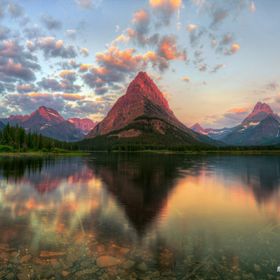

DWongPhotos
FollowViews
307
Likes
Awards
Superb Composition
Absolute Masterpiece
Top Choice
Peer Award
Outstanding Creativity
Magnificent Capture
Genius
Superior Skill
Love it
Top Ranks
Categories
Same photographer See allBehind The Lens
Discover more photos See all
Behind The Lens
Location
Rattlesnake Canyon, near Antelope Canyon in ArizonaTime
This shot was taken in the morning at the end of June. I would prefer to be here earlier, but the tour has set times and this is the second stop on the tour. Rattlesnake Canyon is less visited than Antelope Canyon, but it still has many interesting features to photograph. I made sure to have my tripod here because the large difference in light from the sky and within the canyon require multiple exposures to capture the full range of light.Lighting
To capture the range of light I needed to do a bracketed exposure. The morning light was filtering down the canyon walls, and was still soft since it was reflected light (not direct sunlight).Equipment
I used a Canon 5D MKIII, Canon EF 14mm f/2.8 prime lens, and Really Right Stuff TVC-24L Tripod Legs with a BH-40 PCLR ballhead. Additionally, I prefer to shoot with the L-Plate which makes vertical compositions much easier since it eliminates moving the ball head, just detach the camera and reattach the camera in the vertical position.Inspiration
I had been drawn to the canyon by images taken by other photographers of naturally carved sandstone rock. I knew from the variety of images that there were likely many potential compositions available in the various slot canyons. The smooth and intricate layers revealed by erosion are perfect for creating lines which are easy on the eyes. This particular location in the canyon was interesting because it was a vertical swirl. I wondered to myself just how did this pattern result from normal water flow? Also I think the circular nature of rock was quite unique and had a natural flow to it.Editing
Using the 3 bracketed exposures I created an HDR image in Photomatix. To my surprise this really brought out a lot of detail and color in the rock. I then blended the original RAW files with the HDR file to subtlety blend out anything that looked too unnatural. A also did some simple dodging and burning using luminosity masks to balance out the tones and emphasize certain aspects of the rock.In my camera bag
For short trips where I'm not concerned about weight I try to have all the focal lengths covered. My camera bag consists of a 5D MKIII camera body along with the Canon EF 14mm f/2.8 L II USM Lens, Canon EF 16-35mm f/2.8 L II USM Lens, Canon EF 24-70mm f/2.8 L I USM Lens, & Canon EF 70-300mm f/4-5.6 L IS USM Lens. I carry a polarizer for each lens (except for the 14mm since it cannot accept a screw on filter). I also have a PHOTTIX TR-90 - Timer/Remote that I use for timelapse photography as well as taking pictures where I need to run out into the frame. A 2-liter hydration pack, hat, neck warmer, fingerless gloves (bike gloves work well), head lamp, extra battery, spare memory card, rocket blower, & micro fiber cloth are as in there as well.Feedback
I believe the key to this image is the post processing. By using HDR software like photomatix I was able to bring out detail and color that otherwise would have been difficult or impossible. Blending the original RAW files with the HDR image can keep images from looking too "out there." This basic concept opens up a lot of possibilities. From a shooting perspective, shooting on a tripod can help tremendously as alignment is key for blending multiple shots in post processing. Also, an ultra-wide-angle lens can be useful in a slot canyons as one is often quite close to the subject. Slot canyons are best shot with soft light, before direct sunlight is shining into them, as it will blow out the details and the color wont be as rich.












































